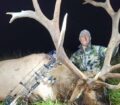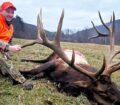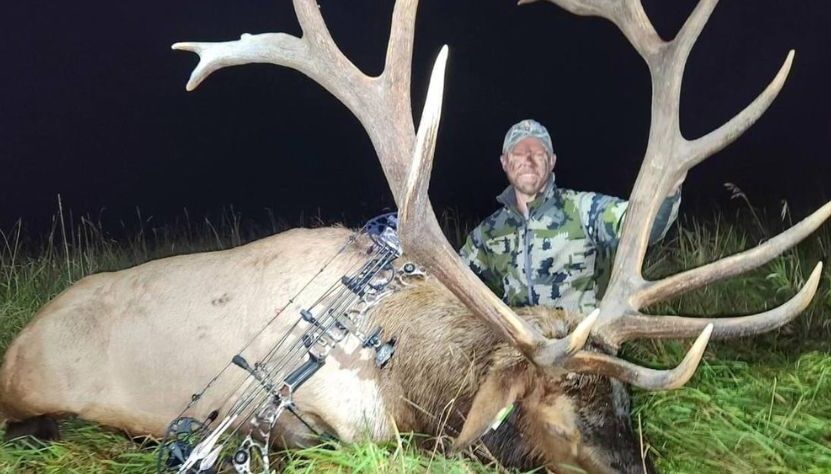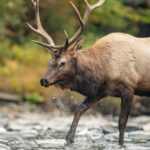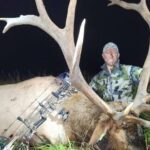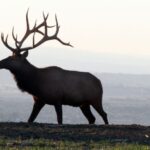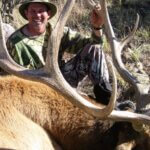Editor’s Note: Elk County Outfitters, 717-439-5795, [email protected] and https://www.facebook.com/elkcountyoutfitters/ is located in north-central Pennsylvania near Caledonia in what’s known as the Pennsylvania elk range. The company, headed-up by Brian Hale, provides guided hunts for the lucky people who win elk tags in the State of Pennsylvania. In the 2022-2023 season, 178 elk tags were available for the entire state, including bull and cow tags. Pennsylvania has three seasons for elk hunting – archery, general and late. In the 2021-2022 season, Elk Country Outfitters guided a total of 36 elk hunters combined between all three seasons.
Brian Hale had found this giant bull in 2010. “There were four bulls feeding in one food plot at that time, and of the four, there were two that were absolute monsters. At that time, I was guiding a hunter with the Governor’s Tag. We saw the bull several times but couldn’t get him close enough for my archer to take him. So, he decided to take a different bull; leaving the other big bull still available to hunt in 2011 – my second year of guiding.
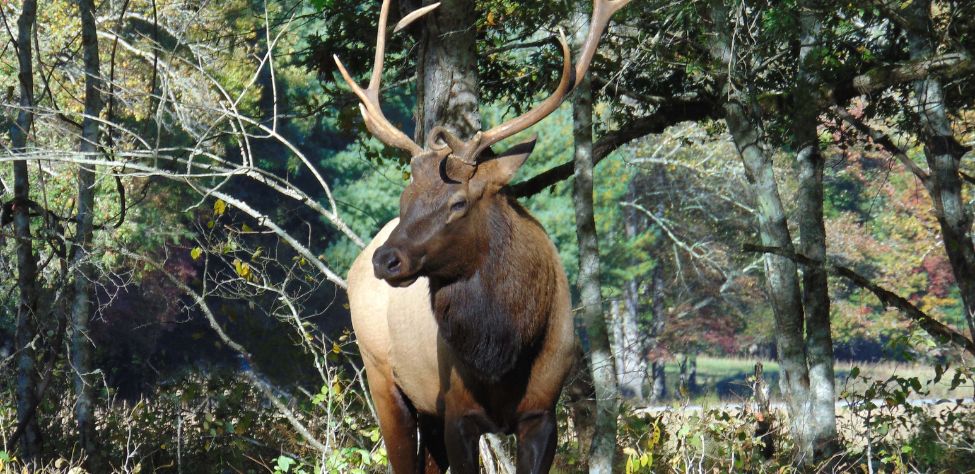
“In 2011, I was guiding the late Paul Hoffnagle, who passed away several years ago and was a resident of Hanover, Penn. We were chasing the big bull because he had purchased the Governor’s Tag. At that time, we only had one season – the general season – and I had found the bull later when he was on some private property, feeding heavily to build his body up after the rut. By this time, he had another medium-sized bull – probably a 330 – feeding with him on an open, grassy area, and when they finished, they went into this thick brush to bed-down.”
On the first day of the hunt, Hale and his client spotted the huge bull on land they could hunt, but he either saw or smelled them and took off running into that big brush.
“We lost him,” Hale remembers. “I made the decision that we weren’t going to try to go into that brush to take him. The spot was so thick that I didn’t know if Hoffnagle even could get a shot. I knew that the bull either would see us or smell us if we had to go into the region where he was bedded. I told Paul, ‘Just calm down. That bull will be back out in that field feeding late this afternoon, feed overnight and be on that field in the morning.’
“That bull kept messing with my mind. In the middle of the day, we had a good wind that allowed us to sneak into the brush area. As we went through, we looked at an open place inside it. About 130 yards from where we stopped, we could see the bull’s rack. There were still plenty of goldenrod and grass in this location for the bull to feed on, and this area had grown-up with some bushes and young trees that allowed the bull to disappear – except for that big rack on top of his head. Although the bull was facing away from us, we still could see his antlers.”

Hale and Hoffnagle dropped to the ground and sat still for three or four hours – waiting for the bull to stand-up, so Hoffnagle could get the shot. They never called to the bull and decided that the best chance they would have to take him would be to allow him to stand-up on his own. Forty minutes before dark, the huge bull finally stood-up, stretched his legs, shook himself and stepped out into an opening.
Hale told Hoffnagle, “That bull is at 132 yards. Go ahead, and take your shot.”
When Hoffnagle shot, Hale watched the huge bull with his binoculars. He could see his hide ripple when the bullet hit him and saw the bull lurch, take a few big steps, and then go down.
“We started hollering, high-fiving and were as excited as anyone could be about this monster bull,” Hale recalls. “I gathered up the shooting sticks. and we walked toward the bull. Paul almost started running. I caught up with him, grabbed him by the hood on the back of his jacket and told him, ‘Slow down, slow down, slow down. We need to be careful.’”
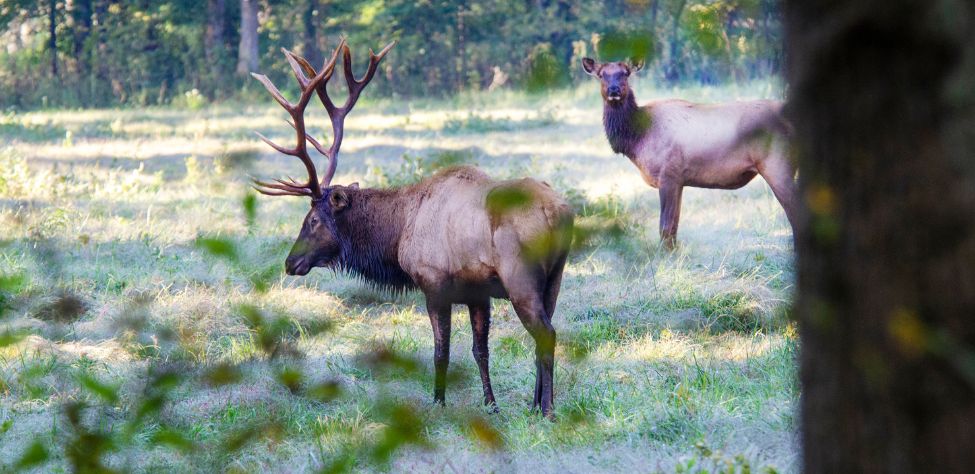
When the men reached the bull, Hoffnagle walked up to him and touched his eyeball with the barrel of his rifle to make sure he was dead. Hoffnagle then dropped to his knees and started crying. He had a total emotional takeover of his body. Hoffnagle had dreamed all his life about hunting for Pennsylvania elk and taking a large bull. He was amazed he’d taken this monster bull in his home state of Pennsylvania.
One of the advantages Hale and Hoffnagle had on this hunt was that they were able to hunt on private property. Hale had called several other people to help load-up this monster. The seven or eight guys each grabbed antlers, hooves and body to muscle that big elk into the bed of Hale’s pickup truck. In Pennsylvania when an elk is harvested, you have 24 hours to get him checked in. However, there is no requirement to bring the animal to the check-in station whole. Many hunters butcher their elk in the field and bring the meat and head to check-in. Two other bull elk were harvested that morning and one other large elk. Hale and his team got all the elk in the back of his pickup truck for check-in.
“This bull had a 415 gross score on the Boone and Crockett scale and netted 376-5/8 inches as a typical bull on the Boone and Crockett record book,” Hale explains. “At that time, the Hoffnagle bull was the sixth largest bull ever taken in the modern-day rifle season. Another bull that was taken on the same day was by Tim Kastle, a resident of Ohio. He had a guide from Elk County Outfitters and his bull scored 390 inches in the non-typical category of Pennsylvania elk (today, that bull is #16).”
Looking for more content? Check out our YouTube channel and watch “Why More Women are Hunting Now” by John E. Phillips.
Expert Guidebooks on Elk Hunting: Best Sellers
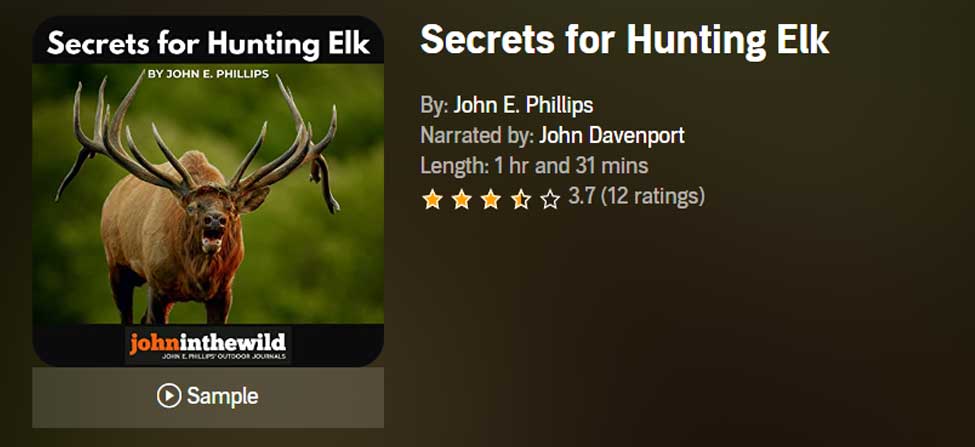
Secrets for Hunting Elk
The quickest, easiest (if there is an easy way), and safest way to find and take that bull elk of a lifetime will be to hunt with a guide.
Chad Schearer, a longtime Montana guide and TV personality, told me, “My hunter is my gun. If I get to the elk, and my hunter isn’t with me, then we don’t take the elk. My job is not only to find the elk but also to help the hunter get to the elk and make the experience as enjoyable as I can for him.” That’s the kind of fella with whom I want to go elk hunting.
An elk hunt can be tough, but it doesn’t have to be so tough that you don’t enjoy it. That’s why this elk hunting book starts with the confessions of an elk guide and with Chad Schearer’s philosophy of what the guide and the hunter’s relationship should be.
A good portion of your success will depend on your physical condition, and Matt Morrett of Harrisburg, Pennsylvania explains how an eastern hunter can get ready physically during June and July to hunt western elk, the animals he describes as, “Like deer or turkeys on steroids.”
Wayne Carlton, well-known elk hunter and TV and video personality from Montrose, Colorado, tells us what types of elk calls to use and what to say to the elk. Mike Miller of Colorado, another elk guide and Mossy Oak video personality, has tactics for the best equipment for bowhunting and gun hunting elk.
You’ll learn helpful strategies and hunting tips in this book, as well as some straightforward hunting methods that will help to make your elk hunt more successful.
“Thanks to the advice in your elk hunting books, I was able to call up a nice 6-point (6X6) bull elk! He was bugling like crazy. I called him in from about a ¼ mile away. Called him into bow range (about 40 yards away). It was a thrill!” ~Rob Brannon
VERSIONS: AUDIBLE & KINDLE
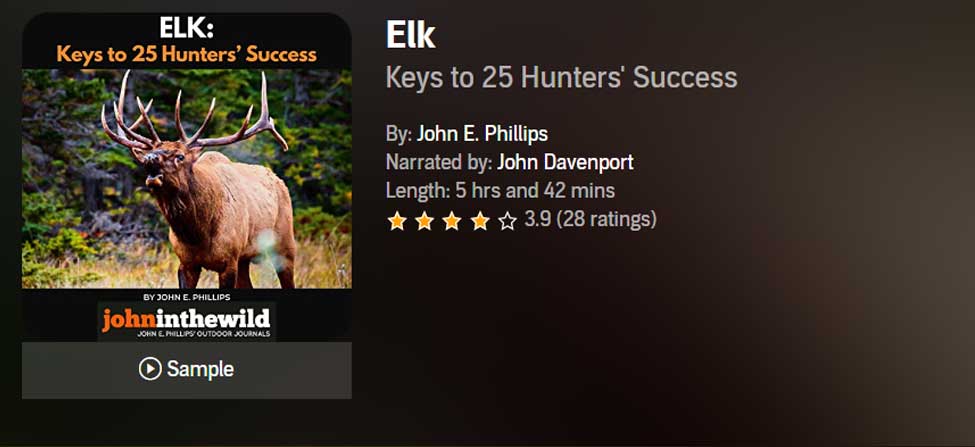
Elk: Keys to 25 Hunters’ Success
Often just one tip or tactic makes the difference in whether you take an elk home to dinner or have to hike back to the truck by yourself. In John E. Phillips’ latest elk book, Elk: Keys to 25 Hunters’ Success, you’ll learn from successful elk hunters the strategies they use to find and take elk.
Many know that the technique that seems to work most often is to hunt where other elk hunters don’t and understand where the elk are before you go on a hunt by studying data from each state, visiting HuntData (see chapter 1), examining maps, and reading postings on elk forums.
This book also tells you how to get ready physically for an elk hunt, including participating in Train to Hunt Competitions, what gear you need to take, how to enjoy a successful do-it-yourself elk hunt, or how to pick the best elk guide for you. You’ll also hear about the X System and the Broken Y System of hunting elk.
Although no one person has all the answers on how to help you find and take your elk, I’m convinced that this book’s outdoors men and women will teach you how to have satisfying elk hunts.
As my friend Karl Badger once told me, “Elk hunting doesn’t get any better than when I ride horses into the high backcountry, see two grizzly bears, hear a pack of wolves howl close to camp all night long, eat plenty of delicious food prepared on a fire and enjoy the company of good friends.”
VERSIONS: AUDIBLE, KINDLE & PRINT
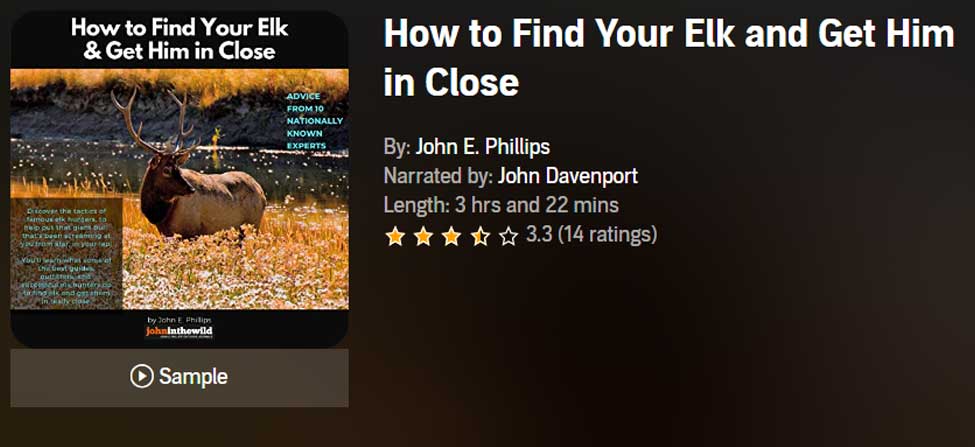
How to Find Your Elk and Get Him in Close will teach you the tactics of 10 nationally known elk hunters, to help put that giant bull that’s been screaming at you from afar, in your lap. You’ll learn what some of the best guides, outfitters, and successful elk hunters do to find elk and get them in really close.
Also in this audiobook, you’ll notice that the majority of the experts call elk to within bow range. We selected numerous bowhunters and bowhunting guides, since the bowhunter has to get much closer to a bull than the gun hunter does – often less than 20 or 30 yards – practically in your lap.
On one elk hunt, I’d heard this bull bugle all morning. My guide had called him within 30 yards, and he was standing just inside black timber. I saw the smoke from his nose wafting out into the icy air less than 30-yards away. All the bull had to do was step out, and I could take the shot with my bow. But then, through no fault of my guide or me, the bull vanished.
The only conclusion I could come up with to understand why the bull I wanted to take with my bow hadn’t stepped out and given me a shot, was because he got raptured. He evidently had left the earth with no trace of himself.
This hunt was when I started wanting to learn more about hunting elk up close. In this book, I’ve tried to find some of the most knowledgeable, experienced, and practical elk hunters. I’ve always found that the best way to learn any outdoor skill, is to either hunt or fish with the best sportsmen in that field.
Often, in elk hunting, that means elk guides, who generally hunt every day of the season and receive a salary for every hunter they guide. So, I’ve put together a group of some of the best elk hunters I know to help us all learn how to find bull elk and get them in close.
VERSIONS: AUDIBLE, KINDLE & PRINT
Tomorrow: General Pennsylvania Elk Hunting Information

